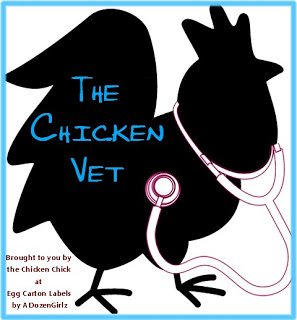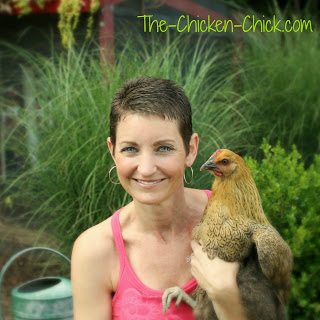The first question in my new series “Answers from the Chicken Vet” came from Maryann B. in Maryland:
Q: “Referring to an article in this issue of Backyard Poultry written by a vet. The articles are well written and on pages 50 and 54. This vet also shows chickens. She talks about different diseases, one being Largngotracheistis which I believe is vaccinated with a live virus for this disease. Regardless, if using a live virus vaccine that would mean that chicken would carry the virus. If one chicken would be introduced to the vaccinated chicken the other chickens could possibly contact it. My confusion is most of the posts on Facebook talk about adding more chicks/adults to a current flock. I never read anything about vaccinating.
Since I am just starting out (and maybe studying too hard about my future pets in preparing for the day they arrive) my concern is infecting chickens I would have by bringing in another chicken/rooster from a different place. I know [certain hatcheries] advertise the chicks they ship are vaccinated. I probably won’t go that route because I do not want 25 chickens to start out. I was thinking about maybe getting a few pullets from one location and someone has a young, healthy rooster they are trying to place.
Maybe I am worrying too much.”
A: This is a great question, Maryanne!
Vaccination is something every chicken keeper SHOULD think about. The problem is, it’s complicated, and there is no right answer. I took 2 full credits in immunology, and I still have a lot of questions.
First, let me tell you some of the basics. Vaccines are viruses that have either been selected for being very weak, have been crippled in a lab somewhere, or have been outright killed (inactivated). The way they protect the bird from disease is by fooling the body into thinking it has been infected with a full-blown disease. (Think of your 10 year old son, back from his first schoolyard scuffle…”it was me or him, Mom”). The body then recognizes the disease virus, and keeps some immune cells in ready reserve to quickly mobilize if it sees the virus again.
Weak viruses act just like disease causing viruses, and create a strong immune response. Crippled viruses (called attenuated, or modified) are good, but don’t stimulate as good a response. Killed viruses are the poorest at stimulating immunity, but you can give a massive dose of them, since they cannot cause disease (they’re dead, after all), so you can still get a good response. Live viruses (even crippled ones), do infect the hen, cause a mild reaction and can be shed. Depending on the disease, vaccine viruses can be shed for various amounts of time and some diseases (such as Marek’s disease, a herpes virus) can be shed at times of stress for the life of the bird. Inactivated vaccines do not colonize and cannot be shed.
So…that’s vaccines…so what? Here’s another concept that I find useful….consider your hen as a seaside town….it has a break-wall to protect it from damage from high seas. To protect the town, you need to either build the wall up high, or keep the waves low. Either way is effective. Vaccinating is building the wall of protection, and the amount of disease that tries to infect your bird is the wave of insult.
Now, where the rubber hits the road: You need to decide for your flock which philosophy you want to follow….low insult, or high protection. Ideally you do both. Protect your hens as much as is practical, and reduce the amount of challenge they face. Your main danger for introducing disease is when new birds show up….you will never be sure what they are carrying with them, even if they look perfectly healthy.
Steps you should take when introducing new birds to your flock:
- KNOW the vaccine status for your birds….what vaccines have they had….how long ago was it (protection wanes, the longer the time is since the last vaccination, the less reliable is the protection….the wall gradually crumbles)
- KNOW the vaccine/disease status of the incoming birds. This is always going to be questionable…unless you are buying day-old chicks, you can never be sure, but ask anyway.
- Try to match the two groups as best you can….if the replacements have been exposed to a disease your hens haven’t, find out if you can vaccinate yours ahead of the new birds’ arrival (usually 2-3 weeks before mixing is the ideal time to vaccinate)…remember to consider the new arrival too…make sure they are protected from the viruses your hens carry
- QUARANTINE the newcomers….ideally for at least a week or two. Birds shed virus much more under stress….if you can get them used to your yard, your water, your feed, your management, etc, etc before they are exposed to the stress of your already established hens, you will reduce virus shedding in the area of your hens by a huge proportion.
- Make the transition as stress-free as possible….short introductions, with a chance for the newbie to escape if necessary, etc.
None of this is fool-proof, but it will minimize the chances of vaccine shedding causing disease in either the established flock or the newbies.
Summary:
Know the vaccine status of your flock and the replacements
- Match up the virus protection as best as you can
- Minimize stress at mixing
- Quarantine incoming birds to minimize virus shedding that accompanies stress
- Plan your replacements, so you can manage the immune status of your flock BEFORE the new birds are at the door
I hope this helps….my vet immunology profs will be spinning in their graves to know that I distilled down all they told me into a 1 page “how-to”. There are a million factors involved, and TONS more information, but this seems the most applicable, and will give you quite a bit of practical advantage.
Hope it helps.
Dr. Mike Petrik, DVM, MSc
The Chicken Vet
Kathy Shea Mormino
Affectionately known internationally as The Chicken Chick®, Kathy Shea Mormino shares a fun-loving, informative style to raising backyard chickens. …Read on


shop my SPONSORS
The first question in my new series “Answers from the Chicken Vet” came from Maryann B. in Maryland:
Q: “Referring to an article in this issue of Backyard Poultry written by a vet. The articles are well written and on pages 50 and 54. This vet also shows chickens. She talks about different diseases, one being Largngotracheistis which I believe is vaccinated with a live virus for this disease. Regardless, if using a live virus vaccine that would mean that chicken would carry the virus. If one chicken would be introduced to the vaccinated chicken the other chickens could possibly contact it. My confusion is most of the posts on Facebook talk about adding more chicks/adults to a current flock. I never read anything about vaccinating.
Since I am just starting out (and maybe studying too hard about my future pets in preparing for the day they arrive) my concern is infecting chickens I would have by bringing in another chicken/rooster from a different place. I know [certain hatcheries] advertise the chicks they ship are vaccinated. I probably won’t go that route because I do not want 25 chickens to start out. I was thinking about maybe getting a few pullets from one location and someone has a young, healthy rooster they are trying to place.
Maybe I am worrying too much.”
A: This is a great question, Maryanne!
Vaccination is something every chicken keeper SHOULD think about. The problem is, it’s complicated, and there is no right answer. I took 2 full credits in immunology, and I still have a lot of questions.
First, let me tell you some of the basics. Vaccines are viruses that have either been selected for being very weak, have been crippled in a lab somewhere, or have been outright killed (inactivated). The way they protect the bird from disease is by fooling the body into thinking it has been infected with a full-blown disease. (Think of your 10 year old son, back from his first schoolyard scuffle…”it was me or him, Mom”). The body then recognizes the disease virus, and keeps some immune cells in ready reserve to quickly mobilize if it sees the virus again.
Weak viruses act just like disease causing viruses, and create a strong immune response. Crippled viruses (called attenuated, or modified) are good, but don’t stimulate as good a response. Killed viruses are the poorest at stimulating immunity, but you can give a massive dose of them, since they cannot cause disease (they’re dead, after all), so you can still get a good response. Live viruses (even crippled ones), do infect the hen, cause a mild reaction and can be shed. Depending on the disease, vaccine viruses can be shed for various amounts of time and some diseases (such as Marek’s disease, a herpes virus) can be shed at times of stress for the life of the bird. Inactivated vaccines do not colonize and cannot be shed.
So…that’s vaccines…so what? Here’s another concept that I find useful….consider your hen as a seaside town….it has a break-wall to protect it from damage from high seas. To protect the town, you need to either build the wall up high, or keep the waves low. Either way is effective. Vaccinating is building the wall of protection, and the amount of disease that tries to infect your bird is the wave of insult.
Now, where the rubber hits the road: You need to decide for your flock which philosophy you want to follow….low insult, or high protection. Ideally you do both. Protect your hens as much as is practical, and reduce the amount of challenge they face. Your main danger for introducing disease is when new birds show up….you will never be sure what they are carrying with them, even if they look perfectly healthy.
Steps you should take when introducing new birds to your flock:
- KNOW the vaccine status for your birds….what vaccines have they had….how long ago was it (protection wanes, the longer the time is since the last vaccination, the less reliable is the protection….the wall gradually crumbles)
- KNOW the vaccine/disease status of the incoming birds. This is always going to be questionable…unless you are buying day-old chicks, you can never be sure, but ask anyway.
- Try to match the two groups as best you can….if the replacements have been exposed to a disease your hens haven’t, find out if you can vaccinate yours ahead of the new birds’ arrival (usually 2-3 weeks before mixing is the ideal time to vaccinate)…remember to consider the new arrival too…make sure they are protected from the viruses your hens carry
- QUARANTINE the newcomers….ideally for at least a week or two. Birds shed virus much more under stress….if you can get them used to your yard, your water, your feed, your management, etc, etc before they are exposed to the stress of your already established hens, you will reduce virus shedding in the area of your hens by a huge proportion.
- Make the transition as stress-free as possible….short introductions, with a chance for the newbie to escape if necessary, etc.
None of this is fool-proof, but it will minimize the chances of vaccine shedding causing disease in either the established flock or the newbies.
Summary:
Know the vaccine status of your flock and the replacements
- Match up the virus protection as best as you can
- Minimize stress at mixing
- Quarantine incoming birds to minimize virus shedding that accompanies stress
- Plan your replacements, so you can manage the immune status of your flock BEFORE the new birds are at the door
I hope this helps….my vet immunology profs will be spinning in their graves to know that I distilled down all they told me into a 1 page “how-to”. There are a million factors involved, and TONS more information, but this seems the most applicable, and will give you quite a bit of practical advantage.
Hope it helps.
Dr. Mike Petrik, DVM, MSc
The Chicken Vet




























This information is really helpful for me.
I have a top knot 2 monthshe same thingm t old she isnt eating or drinking much at all she is very weak she dosent stand for very long. I had 4 die 2 weeks ago. Thought it was over now its back what could this be
How many kind of vaccine?
This was really helpful hay it let me comment thanks